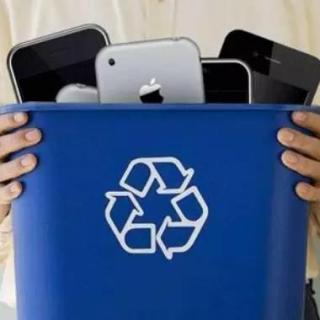
介绍:
20160614ou 一中两外锵锵三人行
今日话题:如何处理废旧电子产品?
NL: Now, Wu You, we have discussed the advances that technology has brought to our lives, and the various benefits that these technological devices have brought to us, but there comes a point when an electronic device is no longer any use; it’s broken, it’s old, you have a new one, and what happens then?
WY: Exactly. Because of the rapid updates of all the devices, sometimes we might have a spare cell phone, a spare fridge or even a television, so some people just throw it away in the garbage bins or sell it to second hand buyers.
NL: I would be more on the recycling side. When I got rid of my last phone I gave it to my sister. That’s recycling in action.
WY: In May, China released an action plan on soil pollution, the State Council vowed to curb soil pollution by 2020 and also improve soil quality by 2030, completing the task outlined in action plans on environmental degradation issued by the central government. But at the same time, the e-waste and all these kinds of electronic devices can be a very serious pollution to the soil as well, because they’re so difficult to be dismantled in the soil. And also, the special situation in China is because China is one of the largest e-waste producers and recipients in the world. Not long ago, in May, a recycling industry report released by the Ministry of Commerce says, e-waste items recycled in China in 2015 alone amounted to over 150 million pieces. Earlier this month, over thirteen countries have come to Beijing to learn about China’s experience in managing the e-waste recycling challenge and also about China’s e-waste management system and how it can be applied and replicated in their countries. This is initiated by the United Nations Development Program together with the Chinese Ministry of Environmental Protection. They want to develop a workshop to share the experience. The government has subsidies. It will be easier for them to recycle the devices.
LSW: We need a market to do this, not just rely on the individual people collecting those recycling things. Those people who are producing those products re-collect them back. The businessmen, the industrialists, the technicians of that company should have the responsibility. Combine those increased costs of re-collecting into the initial price that you sell. For example, when you sell the mobile phone at 2,000 to me, then why don’t you sell at 2,030?
WY: So you mean the consumers should pay the price for dismantling work?
LSW: Well, that’s for that recycling. But when they re-collect those sorts of things, if many parts are still usable, they have to pay us back.
NL: I think the problem here is that you’d have to get the mobile phone companies on board with this.
WY: Shaowen’s idea is mainly about creating, overall, a chain on e-waste dismantling and recycling.
LSW: A chain of industry, right?
WY: Actually, there has been another new idea, because a new app has been created in China called the Baidu Recycle app. Companies can come to collect your old, spare TV or refrigerators, and also they will pay you, you will have the financial benefits from it, just like 10 kuai or 30 kuai. And at the same time, I think to implement a regulation is one thing, and to encourage people to participate in this field is another thing.
大家还在听

